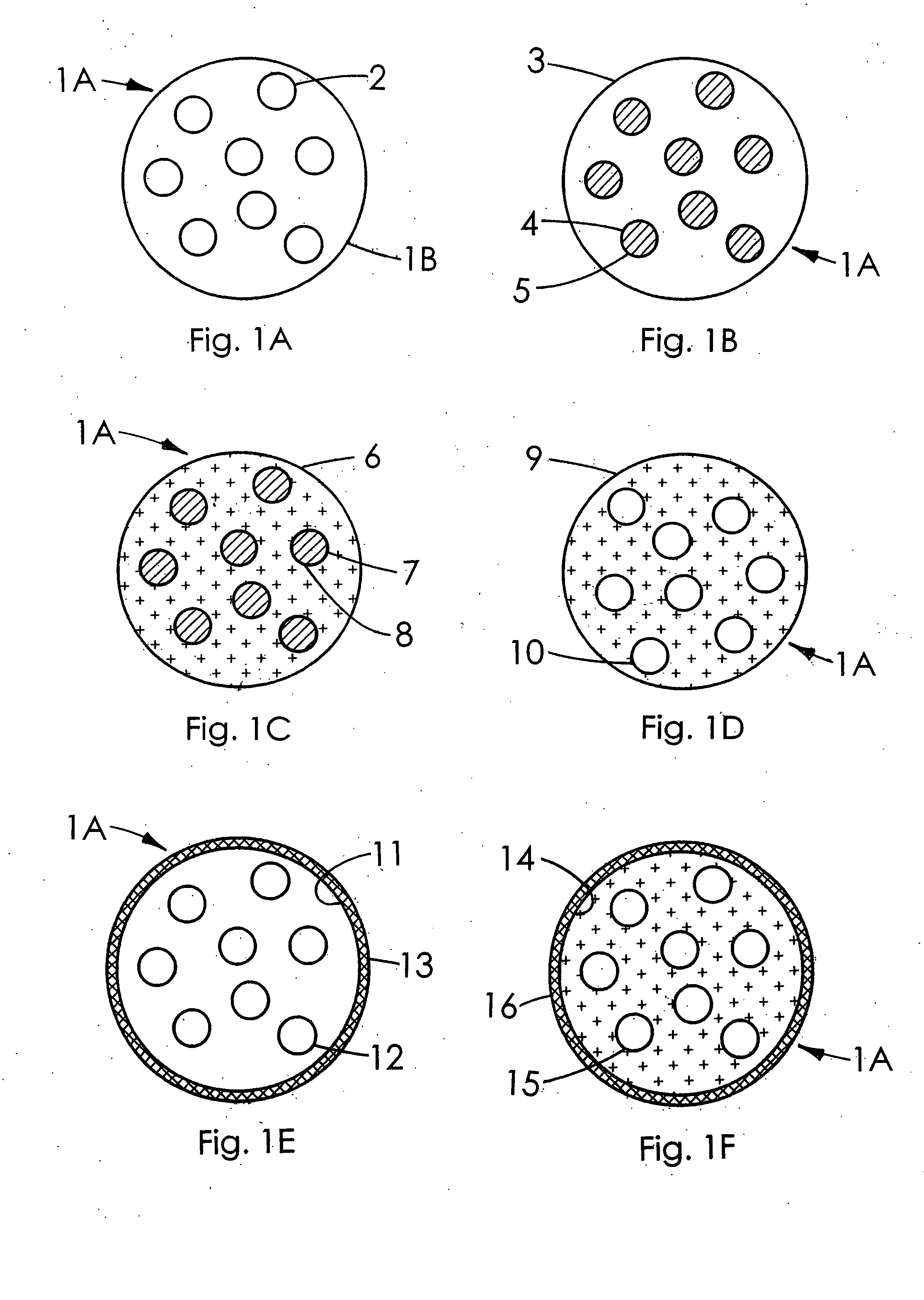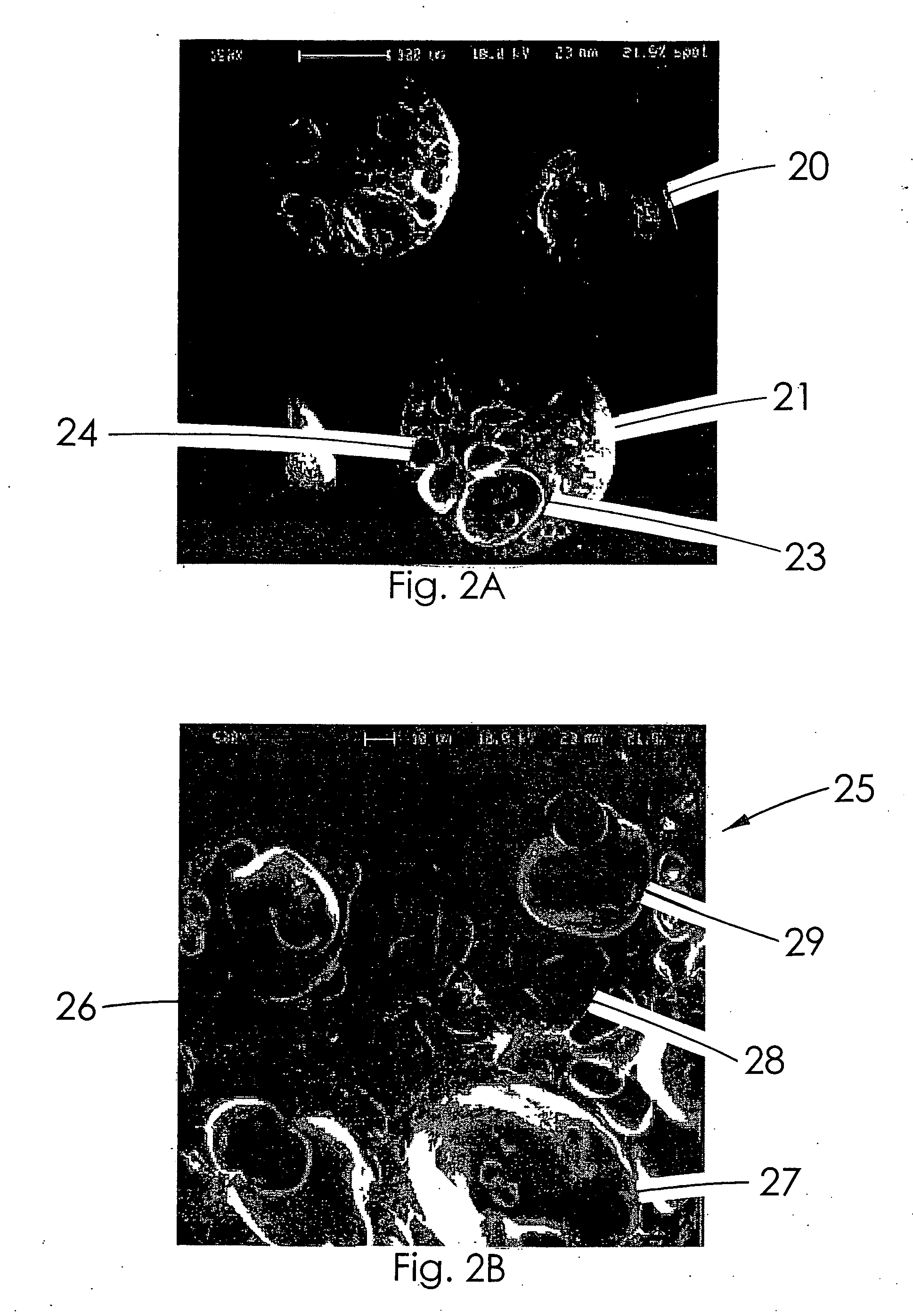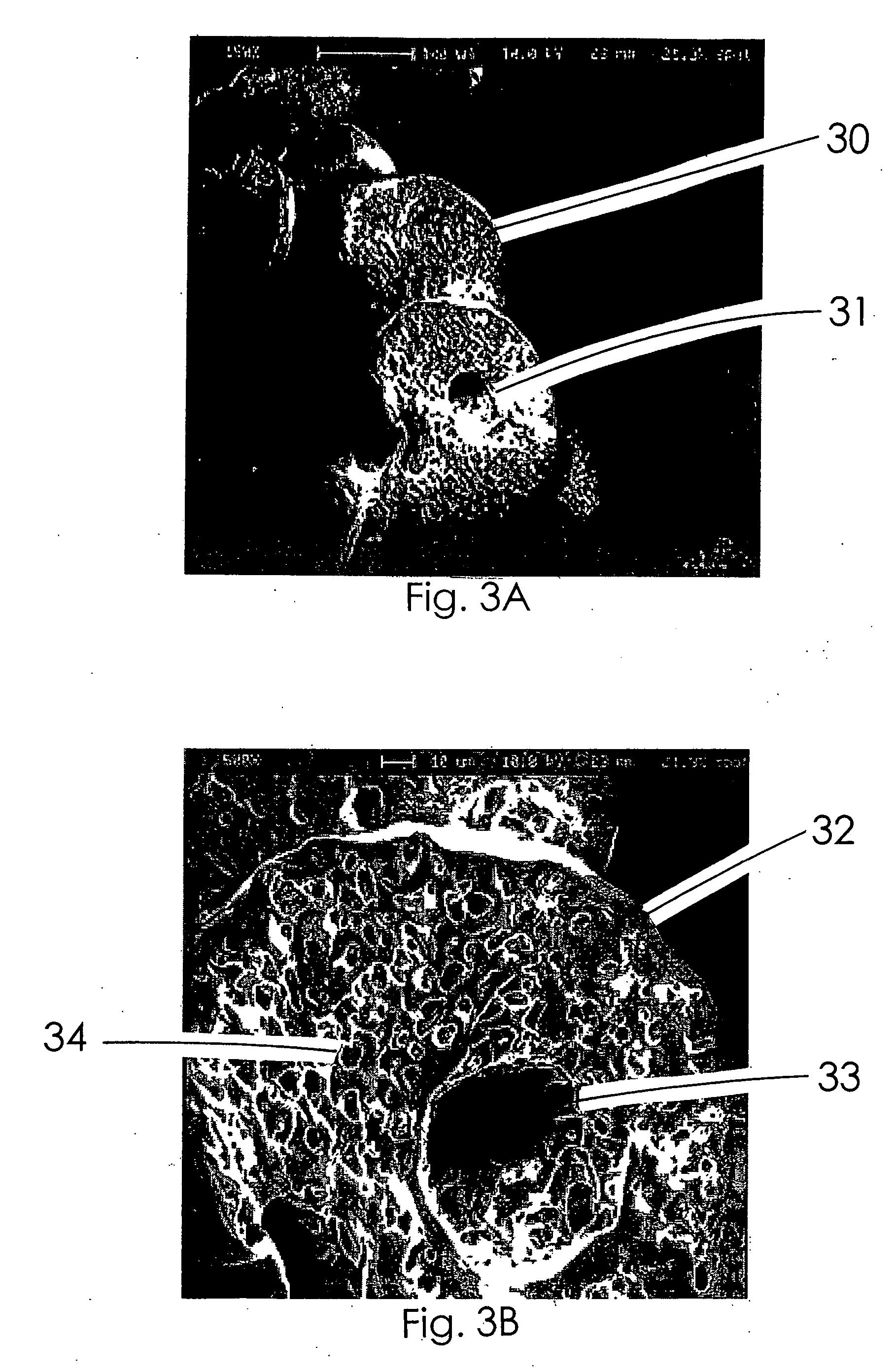Therapeutic microparticles
a technology of microparticles and microparticles, applied in the field of microparticles, can solve the problems of stroke and death, reduced blood loss and procedural complications, and maladies in both humans and animals
- Summary
- Abstract
- Description
- Claims
- Application Information
AI Technical Summary
Benefits of technology
Problems solved by technology
Method used
Image
Examples
example 1
High Density Microparticle Fabrication
[0254] Microparticles of the present invention having a relatively small volume of voids were fabricated using the following process:
[0255] 1) A 75 wt / vol % (weight / volume %) solution of PLGA (85:15 copolymer mole ratio) with chloroform was prepared.
[0256] 2) 2 mL of 75 wt / vol % PLGA was placed in a 20 mL screw top test tube and warmed under tap water to lower the viscosity.
[0257] 3) 0.5 mL of de-ionized (DI) water was added to the 2 mL of 75 wt / vol % PLGA.
[0258] 4) An emulsification was created by vortexing the mixture for 1 minute on setting #8 while maintaining the tube perpendicular to the vortex and holding the test tube at the apex.
[0259] 5) The emulsion was then rapidly poured into a 50 mL test tube containing 10 mL of 0.3wt / vol % PVA.
[0260] 6) A double emulsion was formed by vortexing the PLGA / Water / PVA emulsion for 1 minute on setting #8 while maintaining the tube perpendicular to the vortex and holding the test tube at the apex....
example 2
Low Density Microparticles Fabrication
[0269] Microparticles of the present invention having a relatively large void volumes were fabricated using the following process:
[0270] 1) A 25 wt / vol % solution of PLGA (85:15 copolymer mole ratio) with chloroform was prepared.
[0271] 2) 6 mL of 25 wt / vol % PLGA in a 20 mL screw top test tube was warmed under tap water to lower the viscosity.
[0272] 3) 2.0 mL of DI water was added to the 6 mL of 25 wt / vol % PLGA.
[0273] 4) Follow Steps 4-14 as above.
example 3
Variable Void Volume / Variable Density
[0274] An experiment was conducted to evaluate the effects of process variables on resulting microparticle configuration (spherical vs. non-spherical) and microparticle density relative to de-ionized (DI) water. Process variables which were examined in this experiment included:
[0275] 1) wt / vol % of PLGA to CHCL3 (25 wt % to 75wt %);
[0276] 2) aqueous phase additive (0.5 ml to 2.0 ml); and
[0277] 3) adjunctive sonication during the initial emulsification step.
The methods used in these experiments were identical to those described above, with the following modifications:
[0278] 1) an 85 wt / vol % PLGA base polymer was used instead of 75 wt / vol %,
[0279] 2) the inclusion of lidocaine loading of the PGLA polymer (approximately 50% by weight) in to the dissolved base polymer at step A in the flowchart depicted in FIG. 25, and
[0280] 3) the addition of the sonication step in a sub-group of samples. Results of this experiment are presented in the fol...
PUM
| Property | Measurement | Unit |
|---|---|---|
| Fraction | aaaaa | aaaaa |
| Density | aaaaa | aaaaa |
| Density | aaaaa | aaaaa |
Abstract
Description
Claims
Application Information
 Login to View More
Login to View More - R&D
- Intellectual Property
- Life Sciences
- Materials
- Tech Scout
- Unparalleled Data Quality
- Higher Quality Content
- 60% Fewer Hallucinations
Browse by: Latest US Patents, China's latest patents, Technical Efficacy Thesaurus, Application Domain, Technology Topic, Popular Technical Reports.
© 2025 PatSnap. All rights reserved.Legal|Privacy policy|Modern Slavery Act Transparency Statement|Sitemap|About US| Contact US: help@patsnap.com



